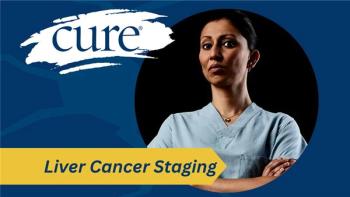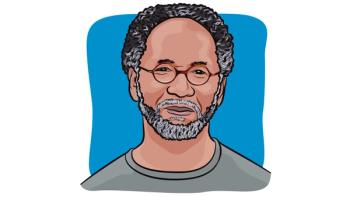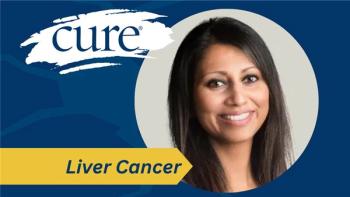
5 Questions With a Physician on Improving Treatment of Pancreatic Cancer
Key Takeaways
- Immunotherapy advancements could expand treatment options for metastatic pancreatic cancer, contingent on overcoming existing barriers.
- Factors influencing therapy response include patient preferences, comorbidities, and performance status.
Eileen O'Reilly discusses the current barriers in treating pancreatic cancer, as well as what she sees for the future of the disease.
If researchers can get over some of the barriers in immunotherapy, patients with newly diagnosed, metastatic pancreatic cancer may have some more treatment options, says Eileen O'Reilly, the associate director for Cinical Research, David M. Rubenstein Center for Pancreatic Cancer Research, Memorial Sloan Kettering Cancer Center.
What are some factors to determine whether a patient with newly diagnosed, metastatic pancreatic cancer is going to respond better on certain therapies versus others?
In an interview with CURE, O'Reilly, discusses optimal sequencing of therapies for patients with pancreatic cancer, what potential immunotherapy has in the field and whether the microenvironments and immune privilege within the malignancy should be understood.I recently gave a talk on what the optimal treatment is for frontline therapy for patients with newly diagnosed, metastatic pancreas cancer. I weighed the different choices of FOLFIRINOX or gemcitabine and nab-paclitaxel, and why one would choose one as opposed to the other.
I think this is a really practical question that faces oncologists everyday, and I think the first thing to note is that we have choices. For a long time, we didn't in this disease, so choices are a positive thing. Patient preferences are a consideration, as for some, the idea of being hooked up to a port and an infusion pump and getting treatment at home isn't so attractive, and for others, issues of alopecia for treatment is a concern. Comorbidities are a factor in terms of selection choice, whether a person has peripheral neuropathy, etc. Performance status is critical. We know that that's been reproducibly shown to impact outcomes, as has independent prognostic values, but it also predicts for treatment tolerability. Therefore, that's important.
Increasingly in pancreas cancer now that we do have choices, and we have even second-line therapies, what is coming to mind is if we should be informing our initial treatment choice by the available options in the second line. Treatment sequencing is a consideration. Pertinent these days is the issue of cost, and whether that should be a factor. It's probably not something that we routinely take into consideration, but like every aspect of medicine, it's becoming more integrated in our thinking and perhaps increasingly part of the decision-making in terms of the cost of drugs and cost of toxicities, as well as quality of life impacts.
What is the most common way to go about treating metastatic pancreatic cancer? Will this change over the next five or 10 years?
All of those factors I think are approaches that we want to be cognizant of as we select an initial choice of therapy.We're certainly hopeful and optimistic that the future will change. In 2016, we have a few choices, and I think an upfront clinical trial is always a consideration for a patient with good performance status. Standard choices for patients with good performance status would be FOLFIRINOX or gemcitabine/nab-paclitaxel. A not uncommon situation for a patient with a less favorable performance status is single-agent gemcitabine, or perhaps gemcitabine plus capecitabine given that there are data supporting that regimen in metastatic disease, and even now some data in the adjuvant setting supporting that. I think, high up on the list, is a trial when possible.
What do you envision on the horizon?
There are a lot of agents on the horizon. A couple are in phase 3, such as pegylated recombinant human hyaluronidase, PH20, and that's being looked at in a biomarker-selected group of patients in combination with nab-paclitaxel. That will accrue over the next few years, and we'll see where that takes us. In a subgroup of patients who have a BRCA mutation, which is probably anywhere from 5 percent to 8 percent, experimentally PARP inhibitors may have a role. There's a maintenance trial evaluating a PARP inhibitor compared to placebo in patients who had initial therapy with platinum. That is another way that the field may be moved forward.I don't think we're getting away from cytotoxic therapy soon in this disease. That's far and away from the treatment approach that's had reproducible benefit, but there is optimism and hope that some of the new targeted agents may move the field forward. I think we understand a little better how to select treatments for patients. We may have the ability to do that from biomarker subgroups. We're alluded to one, the subgroup of patients with DNA damage repair deficiency, and that is increasingly recognized as a group of patients that can be selectively targeted. Platinum drugs in particular may have a role in that patient population.
Is there a reason why immunotherapy just isn't "there" for pancreatic cancer?
Pathologically, we may also be able to classify patients better for certain treatment approaches, and related to that, there's some optimism. Although I think we've got a lot to do here and to understand where immune therapies fit into the treatment of pancreas cancer. We haven't seen the reproducible results that have occurred in other malignancies, but there are hints that by manipulating the microenvironment, by making the cancer more susceptible to immune therapies, there may be subgroups of patients outside of the MSI-high subgroup, which is a very small population.There's a lot of explanations put forward for that. One of the concepts out there is that pancreas cancer is an immune-privileged tumor, and the effector T cells are absent or are present in low levels in the microenvironment. Also that the immune cells that are present are regulatory or suppressive immune cells, and not immune effector T cells. So there are immune cells present, but they're the wrong immune cells and the right ones are in small numbers.
There are many examples of this that are underway, that are trying to alter this microenvironment to allow T cells in, to allow other drugs in, and in that way to try and overcome some of the adherent resistance to immune therapies that have been observed. For example, there's strategies of combining single-agent checkpoints, which have had limited impact. Using radiation or even chemotherapy as an antigen presentation strategy, we're looking at combining checkpoint drugs with antibodies that alter the microenvironment.
What are some of the difficulties that oncologists face with pancreatic cancer?
I think it's very interesting what's happening, and hopefully we'll have a sense over the next year or two years as to which approach of these looks to be the most promising. It's exciting in that there's a lot happening, but I don't think we have one clear strategy that's going to take the field forward.There are issues in terms of patient factors and performance status, comorbidity burden and the fact that this cancer can induce a high symptom burden. A proportion of patients when they're diagnosed have jaundice, pain, they've lost weight, they have new diabetes, they have thrombosis — so all of these factors influence initial choices of treatment and tolerability of the treatment. So that's one aspect of the question.
The second aspect is why this is so difficult to treat from the disease perspective, and we recognize that there's inherent treatment resistance to many of our best therapies, and that's a big problem in pancreas cancer. Not even the issue of acquired resistance, but up front resistance. Why that is, isn't fully understood. It could be the genomic complexity of the disease, the immune privilege status, the whole microenvironment providing a physical barrier, hypoxic environment — all of these factors in some way contribute to the totality of why this disease is challenging.
I would also make the point that there are real people who respond extremely well and durably, and that is equally intriguing. What are the factors there that lead to those outcomes, and why are they so disparate in clinically relevant circumstances sometimes? That's part of the difficulties of this disease.





